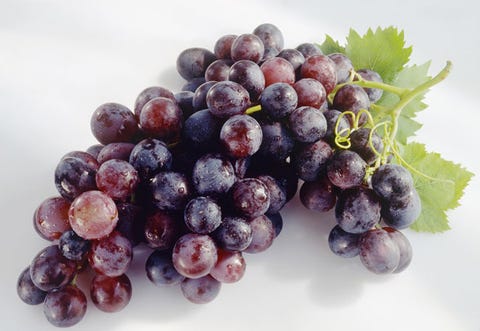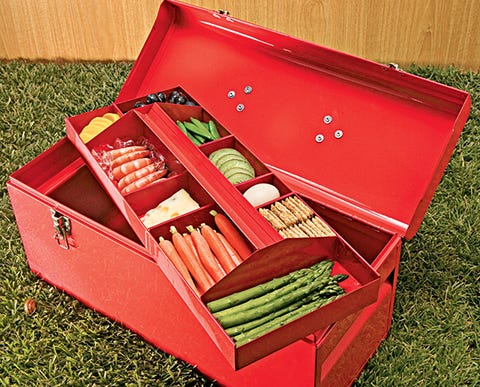Diet Plan for Bigger Buttocks
Every season brings a new crop of weight loss programs to store shelves. That's not surprising, because more than 60% of Americans say they want to lose weight. But what's surprising: Most of us don't stick to these printed plans, according to market research. In fact, the most popular—and successful—weight loss programs today are the ones we make up ourselves.
"The key is to take a few proven weight loss tricks and personalize them," says Lisa Young, PhD, a professor of nutrition at New York University. So rather than adapting your life to fit a set of rules, you adapt the rules to fit your life. Here, we look at popular strategies backed by solid research and offer smart, practical ways to make them work for you.
What Works: Cut Carbohydrates
It's simple math, really: The average American eats about twice the recommended daily servings of grains (many in the form of refined flour products such as white bread, pasta, and sweets), plus about 20 teaspoons of sugar (mostly from sweetened drinks). Eliminating those nutrient-wimpy simple carbs cuts a big source of empty calories; skipping even just one 20-ounce cola every day saves you 17 teaspoons of sugar, 250 calories—and about 26 pounds over the course of a year!
Do it your way:Your body needs carbohydrates for energy; what you should do is eat smaller amounts of healthier ones, says Kathy McManus, RD, director of nutrition at Brigham and Women's Hospital in Boston. Here's how:
Choose whole grains.They're an important source of nutrients and help keep your blood sugar steady between meals and your appetite in check.
Have just one with every meal and snack.That'll get you the appropriate five or six servings a day. To control portions, picture your plate as a clock and limit your carbs to the space between noon and 3 pm.
Balance the bad carbs.If you do eat refined foods, like white bread, pair them with a food that has protein or healthy fat, like hummus. That will help nix a blood sugar spike-and-crash, says Cathy Nonas, RD, director of the Diabetes and Obesity Programs at North General Hospital in New York City.
MORE: 8 Things Food-Safety Experts Never Eat
What Works: Eat High-Volume Foods
Maximilian Stock Ltd/Getty Images 
When you're hungry, you want to eat. Choose foods high in water and fiber and low in calories (think salad and broth-based soup), and you can eat a lot, feel full, and still lose weight. Consuming supersize portions activates stretch receptors in your stomach, which then fire off "full" signals to your brain—but you've filled up and stretched without overdoing it on calories. (Balance your weight loss hormones and lose up to 15 pounds in 3 weeks withThe Hormone Reset Diet.)
Do it your way:Add heft to every meal by reducing your portion of low-volume foods and folding in high-volume (but low-cal) ones. Fruits and vegetables, which are 80 to 95% water, are good additions, as are air-filled foods, such as puffed cereal instead of flat flakes. More simple swaps to fill your belly faster with more nutrients but far fewer calories:
Low volume: Cheese and crackers
High volume: 6 cups of popcorn sprinkled with Parmesan cheese
Low volume: Dried fruit and nut mix
High volume: Fresh fruit, like strawberries or grapes, and ¼ cup of nuts
Low volume: Rice
High volume: Half your usual amount cooked with a box of frozen veggies
What Works: Boost Protein
Protein can take about 4 hours to digest, while carbs take only 2; slower digestion means you feel fuller longer. Plus, protein may help jack up your metabolism: In a study from Purdue University, dieters who ate 30% of their calories from protein preserved more lean body mass while achieving more weight loss than those who ate only 18%. The more lean body mass you hold on to, the more calories you burn at rest.
Do it your way:Forget the cheese and bacon of weight loss programs past; instead, add a little protein to every meal and snack, says McManus.
Choose healthy sources.That means proteins with unsaturated fats (like salmon and soy), not the cholesterol-boosting saturated kind (packed into fatty cuts of beef and whole dairy products).
Stick to proper serving sizes.Three ounces of lean meat looks like a deck of cards, the same amount of fish is the size of a checkbook, and your thumb marks an ounce of cheese.
Add protein to your favorites.Combine ground turkey or shrimp with spaghetti and sauce; stir 1 ounce of walnuts into oatmeal; spread a little almond butter on toast before the jam.
MORE:8 Metabolism-Boosting Meals
What Works: Replace Meals with Bars and Shakes
These products make portion control a snap. "It's calorie cutting without a calculator," says Nonas. An analysis of studies from Columbia University found that women who had one to two liquid meal replacements daily lost an extra 2 pounds per month, compared with other dieters who had the same calories.
Do it your way:Think of a bar or shake as your go-to food when you're in a pinch. Whether you use them as a meal or as a snack, look for at least 3 g of fiber, 10 g of protein, and 3 g or less of saturated fat, and follow these healthy eating guidelines:
As a meal: Most bars and shakes have about 220 calories, so pair either with a small salad with low-fat dressing or a piece of fruit to help fill you up.
As a snack: Between meals, 220 calories is too much. If you have a bar late in the afternoon, for example, cut dinner by half to keep your calorie count in check. (Check out our 7 favorite energy bars made from real food.)
What Works: Keep A Food Diary
Kikovic/Getty Images 
Journaling helps expose bad habits that may otherwise fly under the radar, so you can change them. "When you write down what you eat, you eat less," says Anne Fletcher, RD, author of Thin for Life. A study from Kaiser Permanente Center for Health Research showed that keeping a food diary was a better predictor of weight loss than even exercise!
Do it your way:Beat journal boredom—and the guilt that comes with committing that cookie to paper—by planning your ideal eating day: Essentially, keep a "reverse" diet diary where you map out your menu ahead of time and try to stick to it. Track your victories, too: Buy gold star stickers and put one in your planner for every serving of veggies. "The positive reinforcement builds confidence and motivation, and that's key to success," says McManus.
MORE:8 Things That Happen When You Finally Stop Drinking Diet Soda
Outsmart These Diet Traps
Ann Elliott Cutting 
Our best eating-plan pairings for five of the most common weight loss programs' rough spots:
Fancy dinner out
The formula: Boost Protein + Volumize. Have a high-protein snack midafternoon (such as almonds and fresh fruit) to take the edge off your hunger. Then order a bowl of broth-based soup or a green salad before the meal.
Overscheduled day
The formula: Journal + Use Meal Replacements.The night before, try to plan out your day with a reverse food journal. Toss a bar or shake and an apple in your bag in case plans change or you're starving with no time to buy lunch.
The 4 pm munchies
The formula: Cut Carbs, Volumize + Boost Protein. Skip hunger-stimulating refined carbs like sweets and white bread in favor of only whole grains, such as whole wheat crackers (pick those that contain at least 3 g of fiber per serving). Bulk up your lunch with extra vegetables, like grape tomatoes, baby carrots, or red bell pepper strips, and be sure to have a few ounces of protein, such as thin slices of lean ham on whole grain bread or a chopped egg and a handful of sunflower seeds on a salad.
A party buffet
The formula: Boost Protein + Volumize.Fill at least three-quarters of your plate with low-calorie buffet standbys that are rich in fiber, water, or (low-fat) protein, such as shrimp cocktail, vegetables, lean meats, and fruits.
MORE: 10 Best Nighttime Snacks For Weight Loss
Late-night cravings
The formula: Journal + Volumize.Jot down what you eat on every trip to the kitchen. If you must munch while watching TV, choose low-cal foods you can eat more of, like air-popped popcorn or a plate of cut-up veggies.
Sally Kuzemchak, RD Sally Kuzemchak writes frequently about nutrition and health and has worked in weight management and diabetes education as a registered dietitian.
This content is created and maintained by a third party, and imported onto this page to help users provide their email addresses. You may be able to find more information about this and similar content at piano.io
Source: https://www.prevention.com/weight-loss/a20465900/weight-loss-programs-diet-tips/